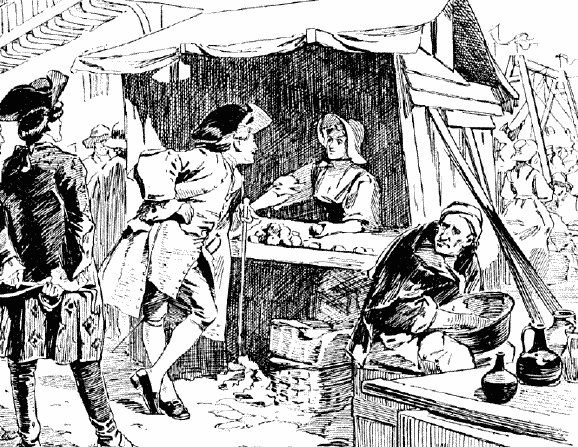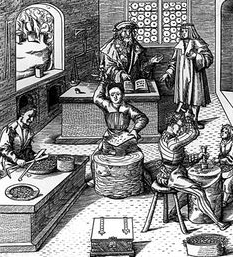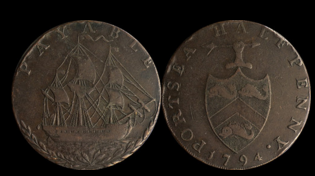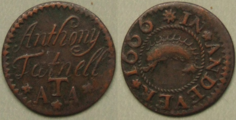What are trade tokens and who issued them?
At many times in British history there has been a problem with a shortage of small denomination coins. This was the currency of the common people. All labourers would have been paid using small coins, they would have paid for their bread and other goods in small coins. The small coinage underpinned the economic fabric of the country. Markets could not thrive without small coins. The English Civil War saw even less coin in circulation, then as the Industrial Revolution gathered pace and the urban population grew, the need for these small coins increased. But other factors were also placing the supply of coinage under increasing pressure, staggering population growth and debasement of the coin itself.
Debasing of coins
When coins were minted from pure metal, silver or gold, there was little difference between the coins nominal value, the face value of the coin and its commodity value, the value of the metal from which it is struck. This money is considered as good money. Governments however constantly sought to replace some of the valuable metals with base metals. Thus the commodity value of the coin was less than the nominal value and known as bad money. The result was that people hoarded the good money or it was taken out of the realm. The result, the people did not want to trade with the debased currency, which in Britain was becoming more and more poorly minted. The Royal Mint further compounded the problem with sporadic production of coins in the late 17th century, a refusal to deal with a newly discovered copper mine in Wales. Counterfeiting was rife of both silver and copper coins and what coins the mint did produce there was little quality control. All in all the minting of small coinage became a debacle and not unsurprisingly, merchants took it upon themselves to mint their own ‘trade tokens’.
Minting Trade Tokens
Private business owners and merchants rapidly took matters into their own hands and the first trade tokens were issued in 1787 to pay workers at the Parys Copper Mine Company. Thomas Williams ‘copper king’ issued the tokens to pay his own workers. By 1795, millions of tokens of a few thousand varying designs had been struck. John Wilkinson, the iron-master, paid his workers using tokens, a practice not wholly enjoyed by his employees.
The industrialist Matthew Boulton began to manufacture tokens. Boulton the most shrewd of business men, had a stockpile of copper and stood to make a great deal of money from producing millions of tokens. In 1788 he set up the Soho Mint but not to press British small coins but by 1790 the Government were still postponing the decision about stamping more coins. It took until 1797 before the Government decided to issue large quantities of copper coins, Boulton was given the contract and by 1802 the production of the private tokens ceased.
Hampshire Trade Tokens
Trade tokens were issued all over the county. It might seem odd that tokens were issued in places that now are small tucked away villages but of course in the 17th century they would have had a different function. Places that were on the stage coach routes for example Liphook and Alton, where people gathered and exchanged goods and money. Others were flourishing ports such as Lymington, an obvious place for token issue.
Tokens were issued in these localities and possibly others, Alresford, Alton, Andover, Basingstoke, Bishop’s Waltham, Crondall, East Meon, Emsworth, Fareham, Fordingbridge, Gosport, Hambledon, Hartley Row, Havant, Hurstbourne, Kingsclere, Liphook, Lymington, Odiham, Petersfield, Portsmouth, Ringwood, Romsey, Southampton, Titchfield, Whitchurch, Winchester, Yateley.
The Portsea trade token shown above is a halfpenny dated 1794. It tells us where it was payable by the word ‘Payable’ and the ship, so payable at sea. On the edge is stamped At George Edward Sargeants Portsea. The Royal Maritime Museum Greenwich has this token in its collection. The only thing I’ve managed to discover about George Sargeant records him as a slop seller.
What do the Hampshire Trade Tokens look like?
The tokens indicate the name of their issuer, which might either be his or her full name or initials. There may be two or three initials, surname and then the first names of the husband and wife. Tokens would also normally give the merchants name and a symbol, picture and some wording. Most were round. Most were not given a specific denomination and these were intended to pass as farthings but there are also a large number of halfpenny and sometimes penny tokens, these normally had the denomination stamped on them.





